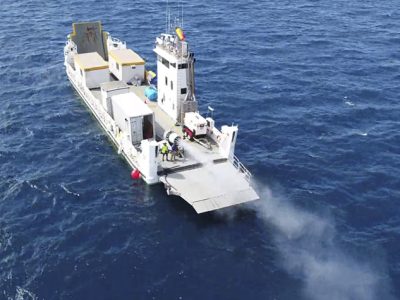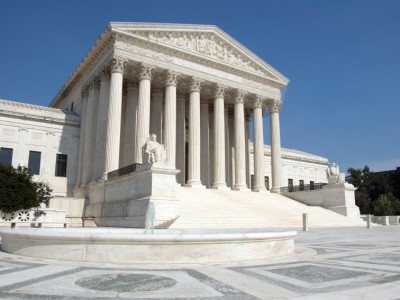What Are The Benefits Of Phasing Out California’s Oil & Gas Production?
Emissions should decrease but multiple factors complicate any predictions
It might seem obvious that phasing out oil and gas production in California would benefit the climate. But the reality is much more complicated, in terms of emissions, economics and even geopolitics. CLEE just released the report Legal Grounds with policy options to reduce in-state production, but the question of how much a phase out would benefit the climate was mostly beyond the scope of our analysis (which we'll be discussing in more detail on a free webinar ...
CONTINUE READINGDo Epidemic-Based Business Closures by Government Trigger an Unconstitutional “Taking”?
Longstanding U.S. Supreme Court Precedents Indicate the Answer is an Unequivocal "No"
Lately, an increasing number of public and private voices have been raised in opposition to business closures ordered by state and local governments in response to the COVID-19 epidemic. In many such cases, that opposition has taken the form of lawsuits filed by business owners, claiming a violation of their constitutional rights. Gun shops across the country, for example, have sued to reopen their businesses, claiming that government closure orders contravene th...
CONTINUE READINGTop 10 Worst Environmental Decisions in California’s History
Ranking the lost landscapes and environmental features
California has a paradoxical history with its environment. On one hand, the state boasts incredible natural beauty, along with a government that is an internationally recognized leader for strong environmental policies. But the state’s residents have also caused severe environmental destruction, particularly in the late nineteenth century — some of which helped spur the mobilization that led to these environmental successes. Looking at California’s history, what...
CONTINUE READINGThe Deregulator’s Dictionary
Members of the Trump Administration speak their own, very special language.
"When I use a word,” Humpty Dumpty said, in rather a scornful tone, "it means just what I choose it to mean—neither more nor less.” "The question is,” said Alice, “whether you can make words mean so many different things.” "The question is,” said Humpty Dumpty, "which is to be master—that's all.” The Trump Administration's attitude toward language seems more akin to Humpty Dumpty's than to Alice's. The Administration often makes statements that are p...
CONTINUE READINGClimate’s Future in the Face of COVID
Even as emissions decrease, climate activists shouldn’t get comfortable
As many have pointed out, air and water pollution have plummeted because of COVID-19. My colleague Ben Harris wrote about the many positive environmental impacts that global-scale quarantine has caused – and they’re truly inspiring. Some have pointed to this massive pollution reduction to illustrate that “we are the virus”. Perhaps the pollution reduction is a welcome silver lining to our grim reality. But climate activists should not celebrate these immediate...
CONTINUE READINGDebate Amid Coronavirus: Are Single-Use Plastic Bags Safer?
How Plastics Companies and Environmental Groups Can Help Us Find an Answer
Since the outbreak of COVID-19, concerns have grown over the safety of grocery bags. Many U.S. states—among them New York, California, Maine, Massachusetts, and Oregon—have suspended or delayed their single-use plastic bag bans in the past two months. Some places like Massachusetts, New Hampshire, and San Francisco have gone even further to temporarily ban reusable shopping bags during the pandemic. These policy rollbacks have sparked a new debate on single-use pl...
CONTINUE READINGA Solar Geoengineering Milestone Goes Largely Unnoticed
The first explicit, meaningful outdoor test garnered little attention in the news or from environmentalists
In response to insufficient cuts in greenhouse gas emission, some scientists and others are researching solar geoengineering. These techniques would reflect a small portion of incoming sunlight to cool the planet and counter climate change. A major step in solar geoengineering was recently taken, although you probably wouldn’t know it from reading the news or following environmental groups. While solar geoengineering has been the subject of quite some modeling work ...
CONTINUE READINGAre the Coronavirus Models Too Pessimistic?
Unfortunately, if anything, reality has often turned out somewhat worse than predicted.
The White House keeps thinking that the major coronavirus models are too pessimistic and that things will turn out better than they predict. The Administration is wrong to downplay the models' forecasts. Rather than being too pessimistic, models have frequently erred in the direction of optimism. Despite continuing uncertainties, there's no reason to discount their prediction downward. Fivethirtyeight.org has a nifty feature where you can check out what some leading...
CONTINUE READINGThe Looming Liability of Orphaned Oil Wells
Abandoned wells pose a rising risk to the state as the industry struggles
Recent reports are highlighting a looming environmental threat from the ongoing struggles of the oil and gas industry, which derive from a combination of the demand impacts of the covid-19 pandemic and long-running price wars and financing challenges. As more operators face bankruptcy, states including California may face a boom in “orphaned wells”: oil and gas wells that are abandoned by the operator without sufficient funds reserved to pay for complete environmenta...
CONTINUE READINGThe Coronavirus and the Commerce Clause
Could Congress mandate CORVID-19 vaccinations? Not if you take some Supreme Court opinions seriously.
If we get a vaccine against a national epidemic, could Congress pass a law requiring everyone to get vaccinated? That very question was asked during the Supreme Court argument in the 2012 constitutional challenge to Obamacare’s individual mandate. The lawyer challenging Obamacare said “no, Congress couldn’t do that.” What’s shocking is that this may have been the correct answer. Conservatives on the Supreme Court have curtailed Congress's ability to le...
CONTINUE READING










